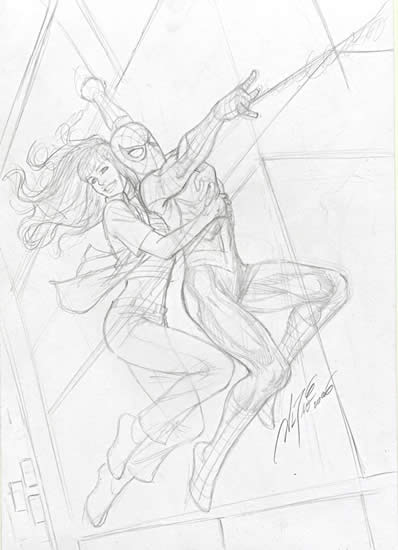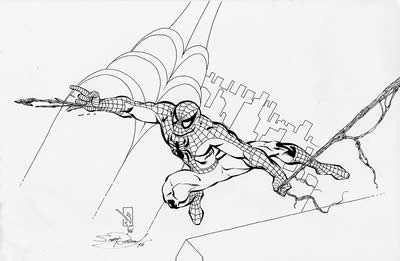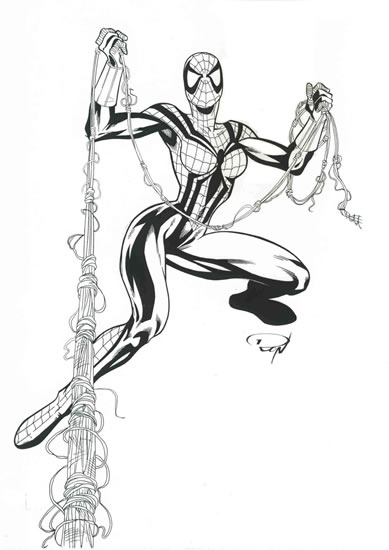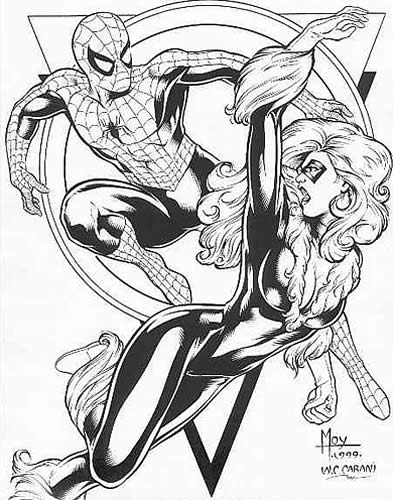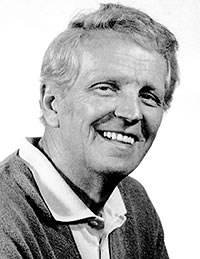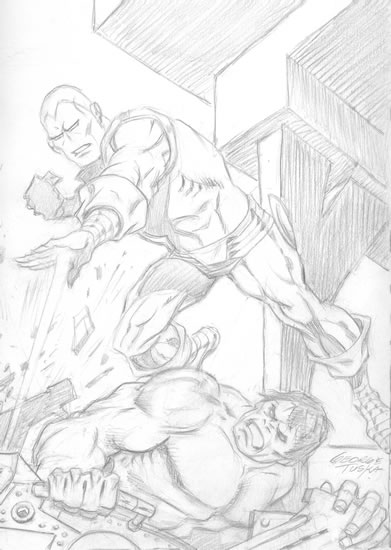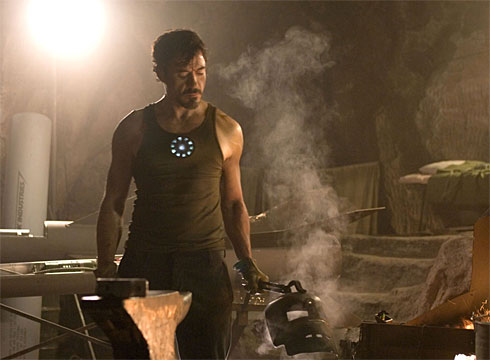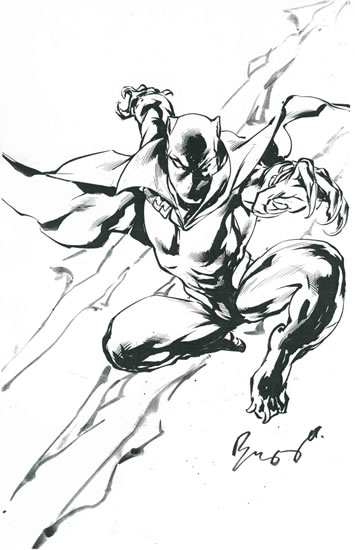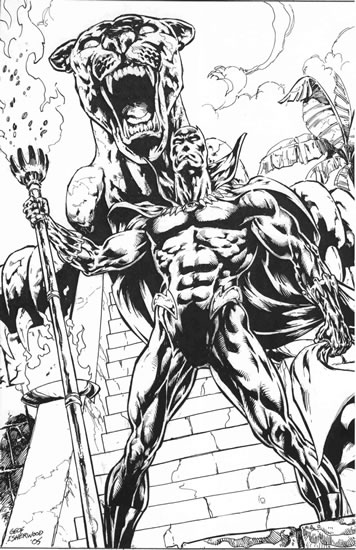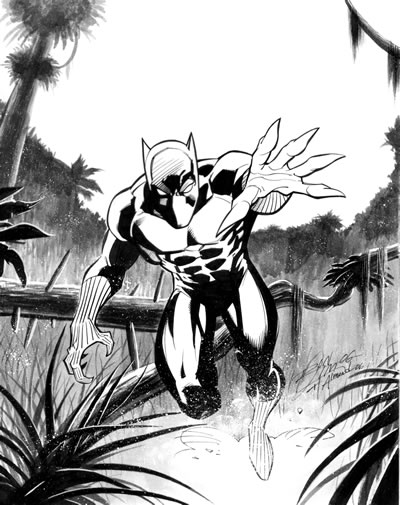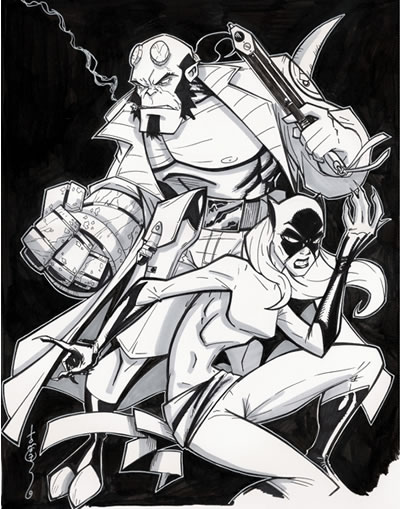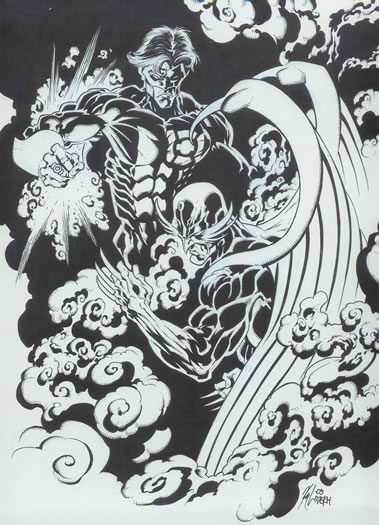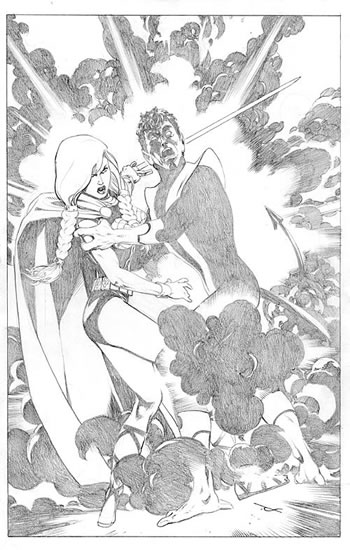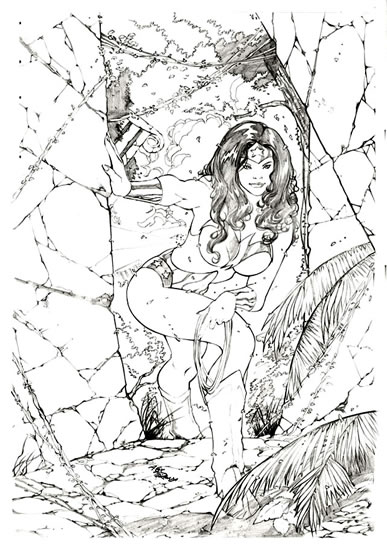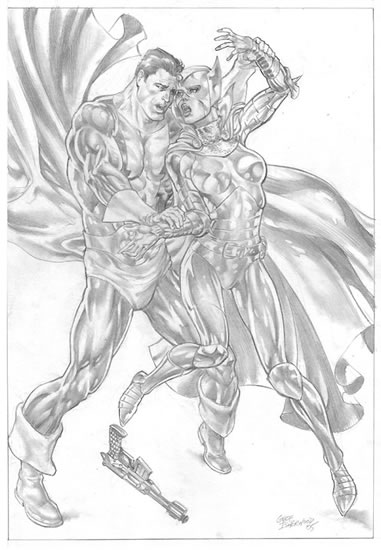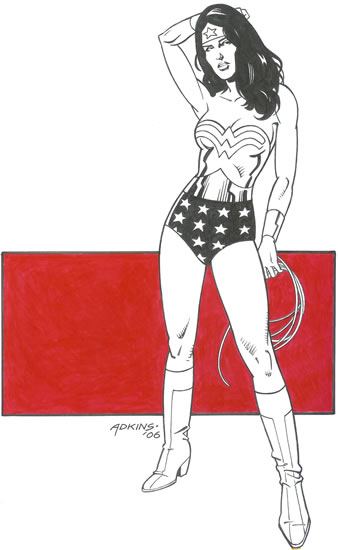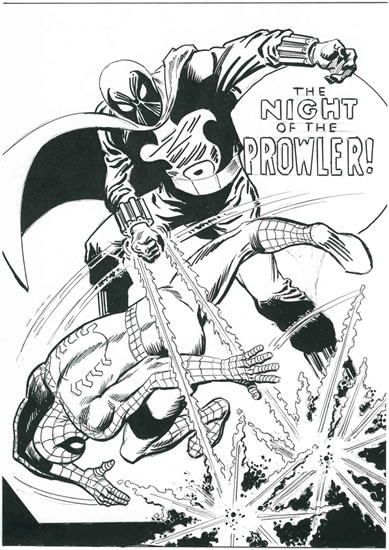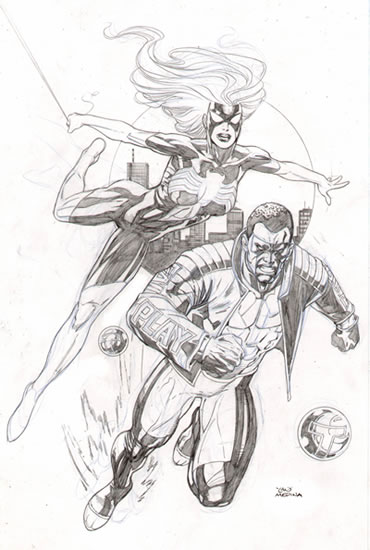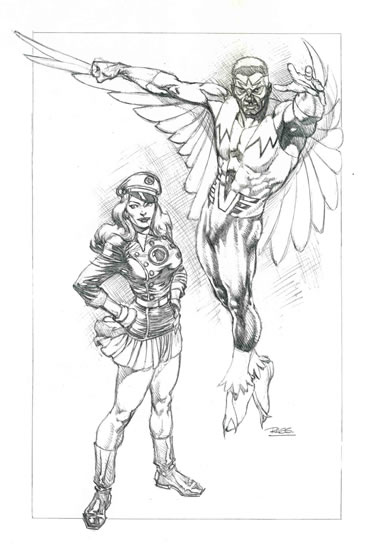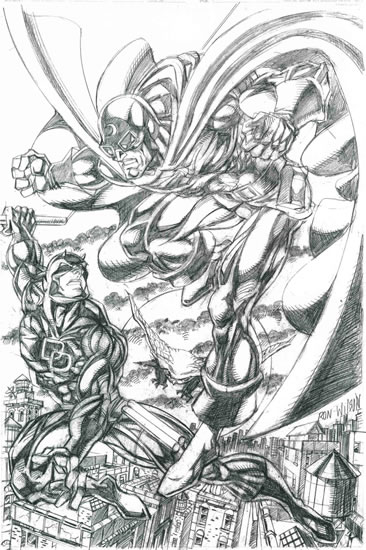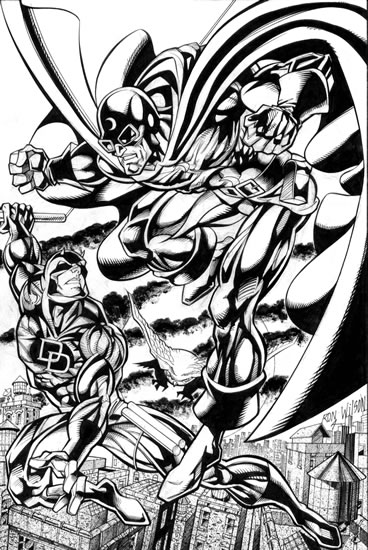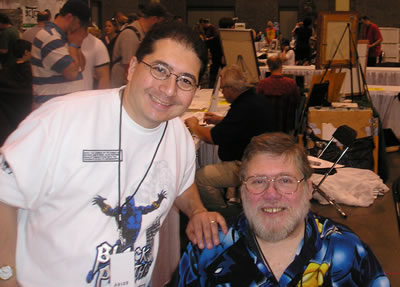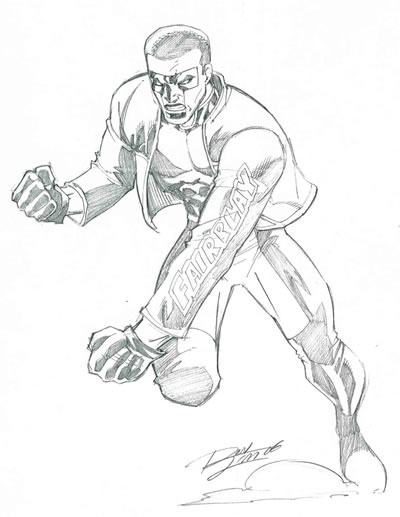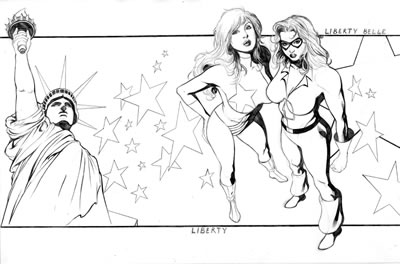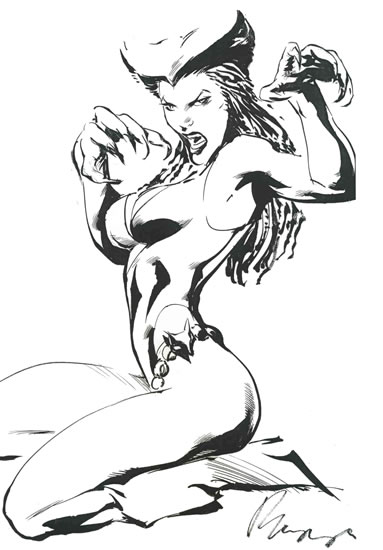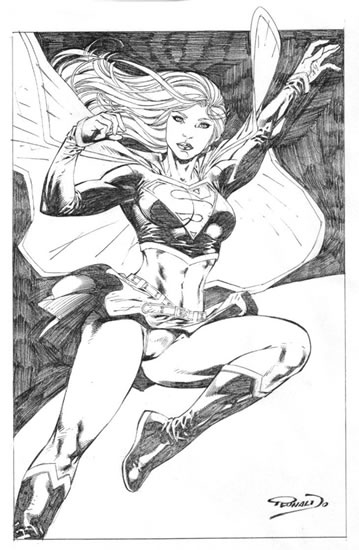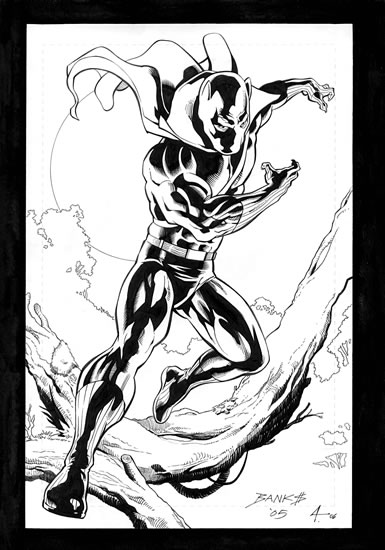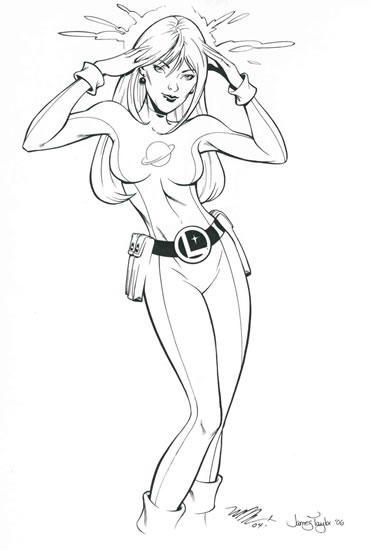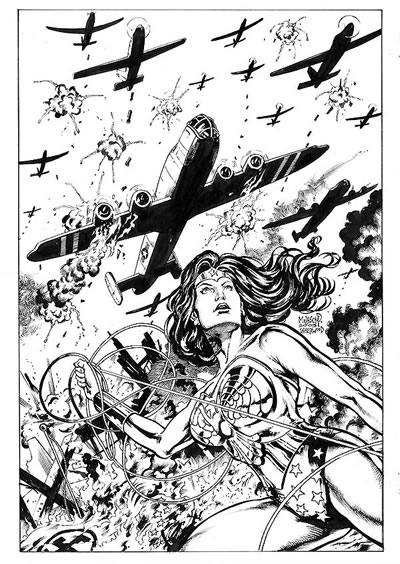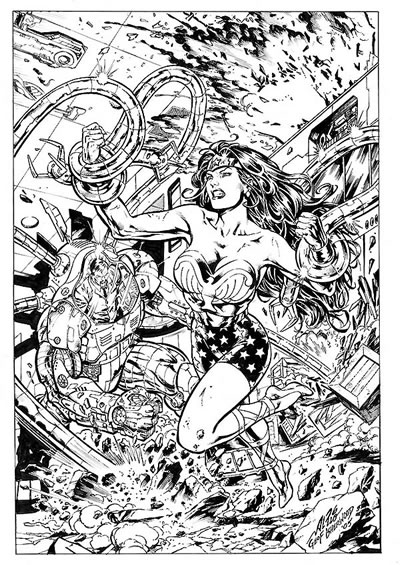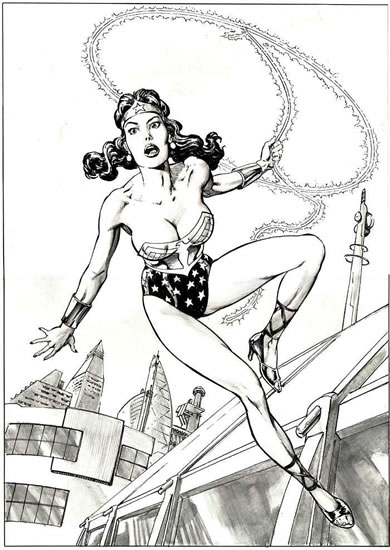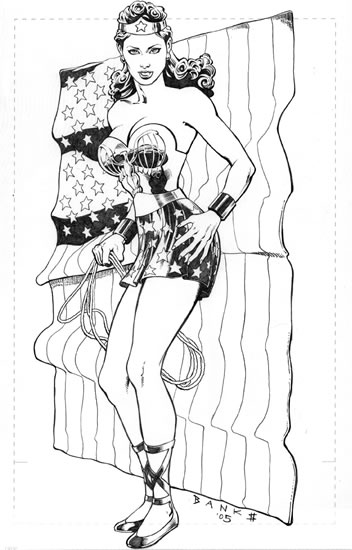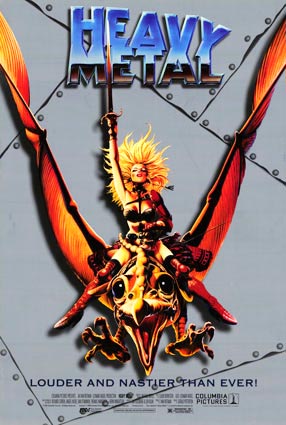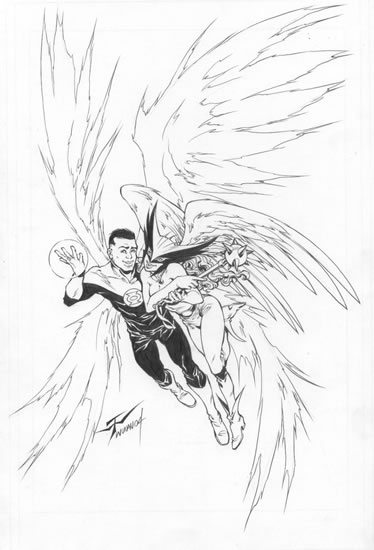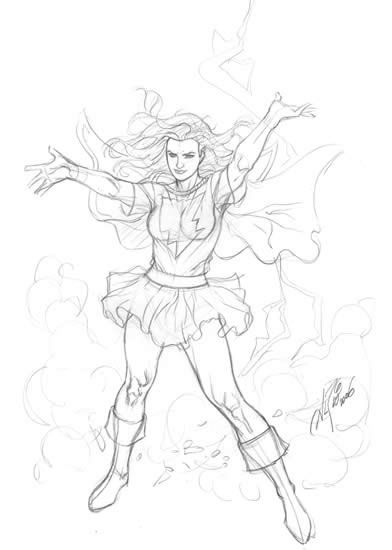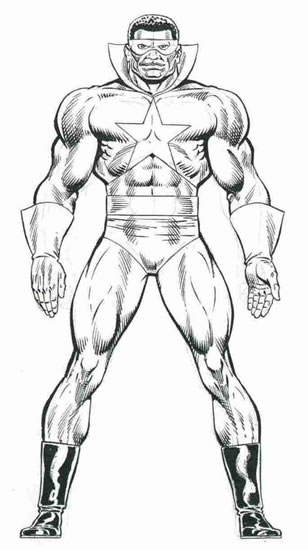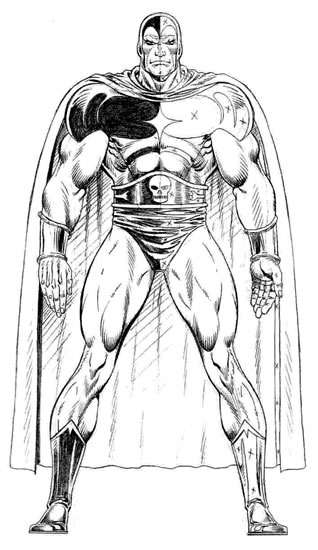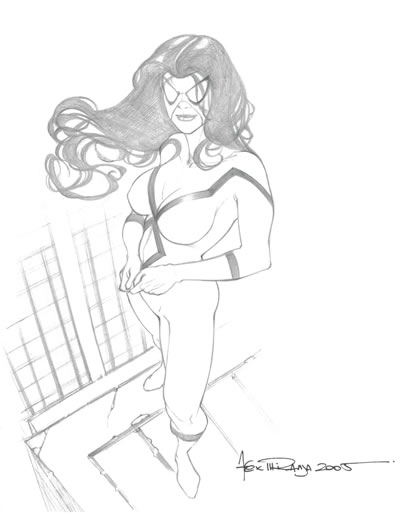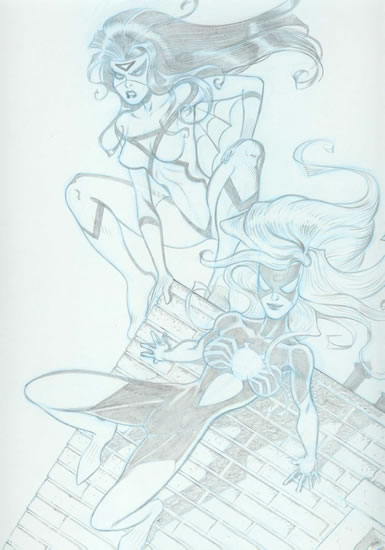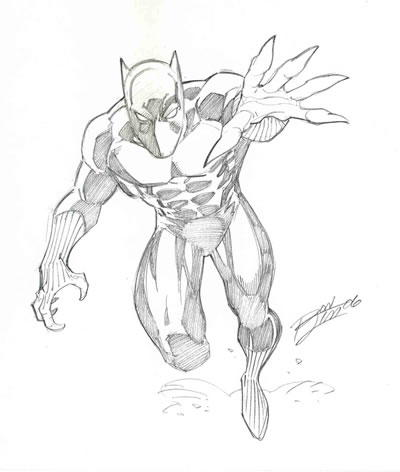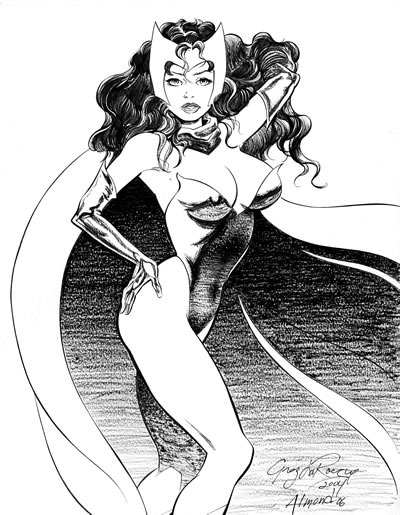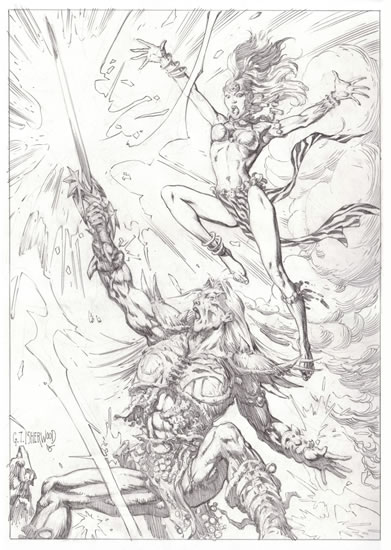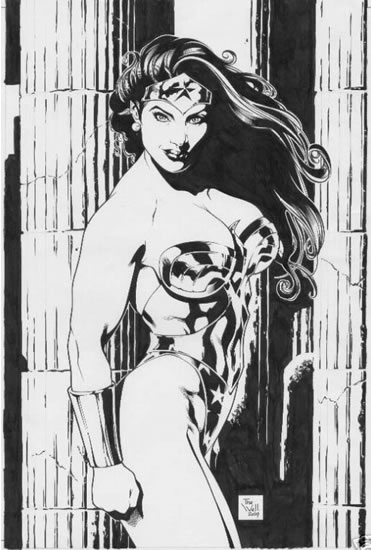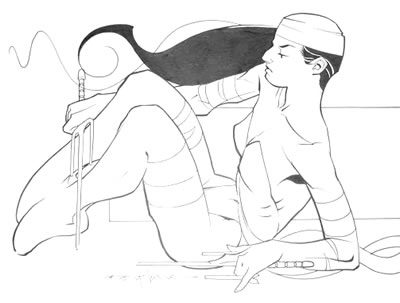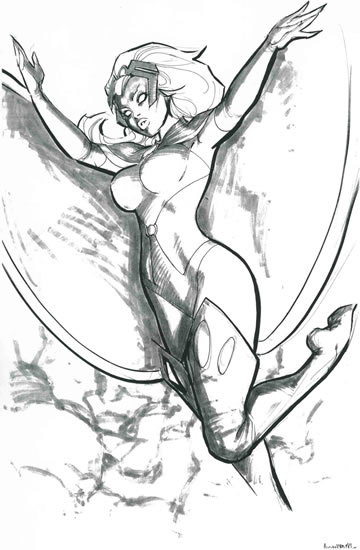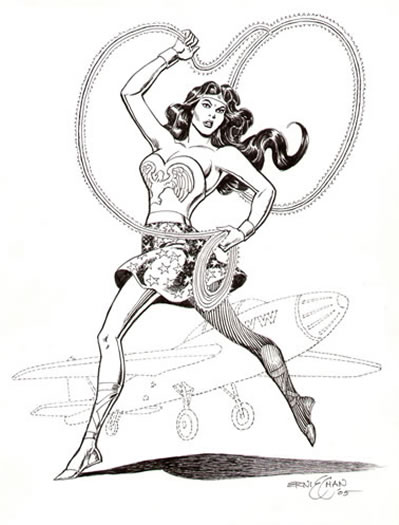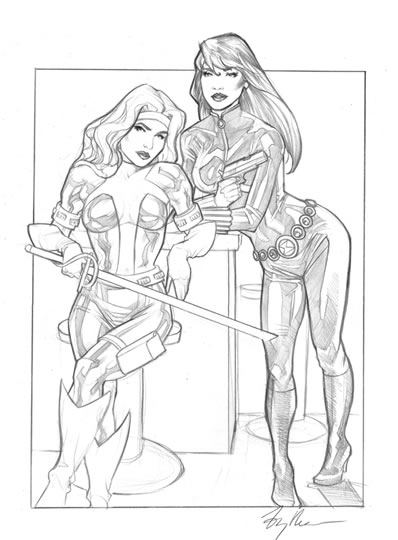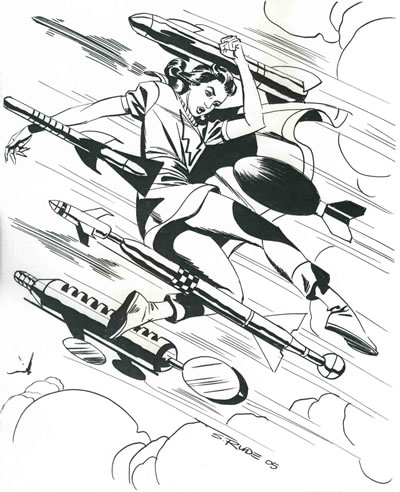
I haven't yet seen any official attendance figures for last week's
WonderCon, but take it from a guy who was there for the first two days of the three-day event: A veritable sea of humanity (and perhaps other lifeforms as well) poured into San Francisco's Moscone Center South for the Bay Area's largest annual geekfest.
My WonderCon weekend began on Friday at 9 a.m. deep in the bowels of the convention center, where I spent two hours preshow as a WonderCon volunteer. My assignment: stuffing plastic swag bags to be handed out to attendees upon arrival. In truth, there wasn't much actual stuffing. Only two items went into each bag: (1) a pin advertising the science fiction movie
The Last Mimzy (coming soon to a multiplex near you); and (2) a postcard-sized flier advertising an indie flick entitled
Yesterday Was a Lie (probably coming direct on DVD to a Best Buy near you).
I was supposed to be on stuffing detail for three hours, but we ran out of bags and stuffing paraphernalia around 11 a.m. My responsibilities thus fulfilled, I gratefully accepted my complimentary admission badge, then spent the remaining hour before the convention opened waiting for my insanely hot cup of Peet's coffee to cool to potable temperature.
At last the doors opened, and I joined the throng that flooded onto the main floor. I made a beeline — as least, as much of a beeline as a middle-aged fat guy can make in the midst of a whelming crowd — to Artists' Alley.
With a handful of previous con experiences under my belt, I knew in advance that the best approach for success in acquiring new art at a comic con is a carefully crafted battle plan. Before the event, I reviewed the roster of attending artists, and developed a prioritized shopping list of artists from whom I wanted to commission drawings, along with the character I wanted each to draw. Of course, the Robert Burns rule came into effect immediately, as neither of the first two artists on my list had yet arrived by the time I reached their tables. So, I dashed about lining up other commissions while keeping an eye peeled for the latecomers. Both soon turned up, and by the time I headed off to my first panel at 2 p.m., the first several items on my list were checked off.
I spent three delightful hours listening to panel discussions moderated by the redoubtable Mark Evanier, a prolific writer for both comics and television. (Mark is also one of my blogging heroes; if you're not reading his
News From ME, your life is seriously lacking.) Mark missed WonderCon last year due to a sudden illness, but he was back in form this year. Actually, he appeared in significantly smaller form this year, having recently shed 110 pounds by way of gastric bypass surgery.
I thoroughly enjoyed Mark's chats with comic writer and historian Gerard Jones (whose panel I attended at last year's WonderCon, and was kind enough to autograph my well-thumbed copies of his books
The Comic Book Heroes and
Men of Tomorrow), cartoonist extraordinaire Sergio Aragonés of
MAD Magazine fame (one of the most personable human beings you'll ever run across), and longtime
MAD editor Al Feldstein, whose Friday panel focused on his pre-
MAD years as artist, writer, and editor for the notorious EC Comics of the 1950s.

By the end of Friday's festivities, I had three and one-half commissions in hand (I'll explain in a minute) and still more on waiting lists for Saturday. Friday's haul included...
* Delivery of the Hellboy/Hellcat Common Elements artwork that Tom Hodges completed in advance of the con.
It was a treat to meet Tom and his wife (that's her elbow and purple sneaker at left) in person. I had hoped to catch Tom's panel on
Star Wars art, but I was still frantically lining up commissions when the discussion kicked off at 1 p.m. Friday.
* A new Common Elements commission penciled by Ron Lim, featuring Spider-Man and the Manhattan Guardian. (The common element: Both characters worked for newspapers in civilian life: Spidey/Peter Parker at the
Daily Bugle; Guardian/Jake Jordan at — not coincidentally — the
Manhattan Guardian.)

I'd never attempted a CE at a con before, given the time constraints. I knew that Ron could pull it off, given that he drew another two-character (Captain America and the U.S. Agent) sketch for me two years ago at WonderCon.
Getting Ron's terrific pencil art done was only half the battle, though. On Saturday, I hoped to ask inker Danny Bulanadi (a no-show on Friday, but his representative Frank assured me Danny would be at his table all day Saturday) to finish the piece.
By the way, Ron and his wife recently welcomed a new baby to their family. Congratulations, Lims!
* This jaw-dropping depiction of Taarna by the artist known as Buzz.
I'm always delighted to see Buzz at a con, not only because I love his art — one of the most distinctive stylists of his generation, in my never-humble opinion — but also because he's one of my favorite artists to talk with. Buzz (who I'm certain has an actual name, though I have no idea what it is) has a point of view about everything under the sun, and isn't shy about sharing his thoughts about the comic industry, his fellow artists, and even world events.

Buzz's eyes lit up when I handed him the reference scan of Taarna. This was his first opportunity to draw her for a commission — he admitted having drawn her a time or two for his own amusement — and he poured his heart and soul into this artwork. This was the only piece Buzz worked on all day Friday, and the result is stunning.
 * A dramatic pencil sketch of Wonder Woman, by the criminally underrated Paul Ryan.
* A dramatic pencil sketch of Wonder Woman, by the criminally underrated Paul Ryan.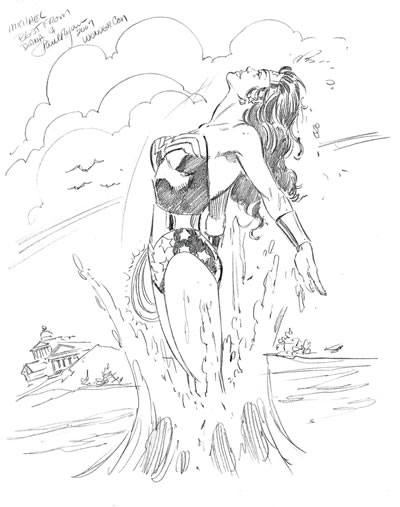
I knew from reading his Web site before the con that Paul — who's best probably known for his work on
Fantastic Four — enjoys drawing our favorite Amazon. Thus, this assignment was a natural fit. I watched him start this piece several times before he finally hit on the concept he wanted to finish. It turned out beautifully. I'm always thrilled when an artist shows a character doing something visually interesting, rather than the familiar stock poses.

Paul, his charming wife Linda, and their daughter Heather were as nice as pie, to use a hoary cliché — lovely people, gracious and extremely accommodating to Paul's many fans. This picture of Paul, by the way, was taken by Heather, who just may have a budding career in photography.
So that was Friday.
Saturday — a day when seemingly half the population of the Bay Area crammed into Moscone South — found me making numerous surreptitious checks on the progress of my remaining commissions (at least, I hope the artists thought they were surreptitious), and browsing the numerous vendor stalls on the convention floor. I broke up the day with a two-block stroll over to the Westfield Center's food court for lunch — silly me for thinking a Saturday afternoon would be any less congested at San Francisco's newest and largest mall — and by catching a few excellent panels.
The two highlights among the latter were a MAD Magazine showcase with Mark Evanier hosting Al Feldstein and Sergio Aragonés...

...and a fascinating discussion of the process of translating comics to television animation. This informative and fast-paced chatfest featured the insights of one of my writing heroes, Dwayne McDuffie (
Static Shock,
Justice League Unlimited), along with fellow scribes Adam Beechen (
Teen Titans), Stan Berkowitz (
Legion of Super-Heroes), Greg Weisman (
Gargoyles, the upcoming reimagining of the animated
Spider-Man), and moderator Shannon Muir (
Extreme Ghostbusters).

But what really counts is the art, yes? Saturday's pickups included...
* Danny Bulanadi's embellishment in ink of Ron Lim's Spider-Man / Manhattan Guardian commission.
Danny did a bang-up job inking over Ron's pencils. I took the finished piece back to Ron for his approval, and he, too, was pleased with Danny's work. (Ron also re-signed the piece in ink, so his signature would match the rest of the finished art.) Both Danny and his representative Frank were quite friendly, and lots of fun to chat with.
 * Taarna, take two: This time, by the wily veteran Tony DeZuniga.
* Taarna, take two: This time, by the wily veteran Tony DeZuniga.
Tony's table was immediately adjacent to Buzz's. Throughout the time Buzz was working on his Taarna masterpiece on Friday, I kept glancing over at the sketches Tony was drawing, and thinking, "I'll bet Tony would do an awesome Taarna, too." And of course, he did.

The above photo was taken by Tony's lovely wife Tina, who insisted on letting some no-talent clown sneak in next to Tony for the money shot.
* A spectacular Storm by the great Phil Noto.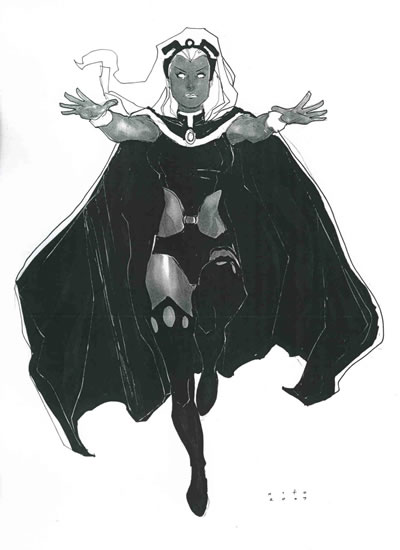
As luck would have it, though, my opening moments frenzy on Friday took me past a table where sat the talented — and always popular — Phil Noto sat, drawing board in hand. Noto hadn't been scheduled to appear at WonderCon, which was the only reason he didn't already have a massive line at his table the instant the doors opened, as he usually does. In fact, there was no one even within spitting distance of Phil's table. (Not that you'd want to spit. It's just an expression.)

I asked Phil if he was taking a commission list. When he answered in the affirmative, I could scarcely restrain my giddiness as I put in my request. On Saturday, Phil came through with a beauty.
 * Aaron Lopresti's gorgeous Supergirl, wearing her hip, trendy disco-era costume from the 1970s.
* Aaron Lopresti's gorgeous Supergirl, wearing her hip, trendy disco-era costume from the 1970s.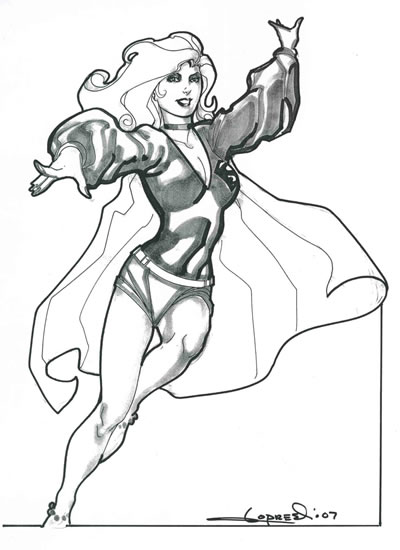
This was, I think, the third con I've attended at which Aaron was a participant. I'd never before been lucky enough to even get on his sketch list, much less actually score a commission from him. As it was, this was the very last piece he finished on Saturday evening, and I was ecstatic that he got it done.

When I asked to take his photo with the art, Aaron laughed and asked, "Should I be holding the money, too?" We mutually agreed that we could do the "money shot" without the actual cash in view. Funny guy, that Mr. Lopresti.
* A cute and vibrant Ms. Marvel, courtesy of Runaways artist Michael Ryan.
I loved Michael's recently concluded run on
New Excalibur, so having him draw this piece for me gave me goosebumps. (Okay, that's an exaggeration. But it was pretty cool nonetheless.) Michael's style reminds me a lot of Mike Weiringo, another contemporary artist whose work I admire. I enjoy Scot Eaton, the artist who replaced Michael on
New Excalibur (and about whose work Michael was graciously complimentary), but since I don't read
Runaways, I've missed Michael's art of late. Now I won't have to.

To Michael's immense credit, he kept plugging away at this drawing even as the rest of Artists' Alley was packing up for the night all around him. When he finished, he seemed concerned that he'd drawn Carol too young-looking (in the comics, she's a woman in her early-to-mid-30s). I assured him she looked just fine to me. He shrugged and said, "I tend to draw every character young, I guess. Or at least, that's what people keep telling me."

With my portfolio bursting with fresh art, and my mind reeling with fond memories of associations new and renewed, I wearily concluded my two-day junket into the dark heart of WonderCon.
My feet still hurt.
One non-comic-related highlight of the convention: I got to meet one of my favorite character actors — Ernie Hudson, who'll forever be remembered as Winston Zeddemore in
Ghostbusters. We chatted briefly about roles of his that I especially enjoyed; in particular, Hawk in the 2001 TV movie
Walking Shadow, based on a Spenser novel by Robert B. Parker. I told Ernie that, as much as I enjoyed Avery Brooks's familiar portrayal on
Spenser: For Hire, his Hawk more closely fit my mental image of the character from Parker's books. Ernie confessed that Parker had expressed a similar opinion. Great minds think alike.
Oh, yeah — I overheard someone saying that
300, which premiered at WonderCon, is the greatest movie ever made. I'm guessing that person has never seen
Citizen Kane. Or
Casablanca. Or even
Dark City.
And that, at long last concluded, is your Comic Art Friday.
Labels: Aimless Riffing, Celebritiana, Comic Art, Comic Art Friday, My Home Town, Reminiscing
